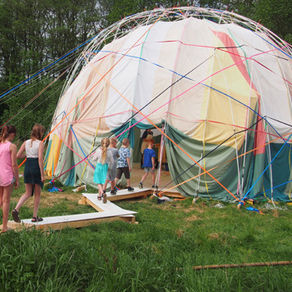
WHAT IS A SOUNDWALK?
WHAT IS A SOUNDWALK?
A small group of people embarks on a guided tour, where nothing will be explained, but rather experienced in attentive quietness. You expose your ears to all the sound around you and take this opportunity to observe the world without being forced to act or respond.
There is a special awareness for others and yourself when you go together in silence. In addition, a soundwalk gives you the chance to get to know your neighbourhood better, reveal unknown places and be surprised by what is otherwise lost on your searching eyes and busy minds.
THE GUIDE
THE GUIDE
Simon Voigt is a musician and works with acoustic ecology as an interdisciplinary field of research, where science and art merge.
He first got interested in silence, through music and storytelling, as an element that creates presence and community.
In recent years, Simon has led soundwalks and listening workshops in Finland, Estonia and Denmark.
SUPPORTED BY
SUPPORTED BY



BLOG
BLOG
Read Simon's essays on his blog
BACKGROUND AND VISION
Sounds have their own ecosystem. We don't realise that, but it has a great influence. For example, 80 million people in the European Union indicate that noise degrades their quality of life decisively.
EU Commission's video on noise pollution:
https://youtu.be/FAg_Z9O5E_4
Noise, defined as unwanted sound, demonstrably produces stress and consequent diseases, some of which are fatal, e.g. high blood pressure, aggressiveness, irritability, insomnia, depression, tinnitus, sound hypersensitivity. Sounds can scare and lure. Submarine's supersonic signals scare the big sea creatures to death. A lot of music relaxes people and accompanies love and joy of life. Aggressive music from eg. Metallica and Slipknot are sometimes used for torture. Meditative music soothes pain and sets the mind free. The modern world is so full of sounds and acoustic signals that we have to take it seriously for the sake of our own civilization.
But it is easy to despair when we focus solely on protecting ourselves from or preventing noise and its negative effects. There are countless charts showing the inner ear and decibel columns of flight machine noise. Lawyers tell about the challenges of winning court hearings and acoustic engineers argue that more time and money is needed to carry out more research, while it is clear that many of these professionals are interested in maintaining noise as a means of continuing employment. Then people might resign and say, "The world is noisy, so what?" It's not helped with only health and safety regulations. The question is far greater and affects far more than just us humans.
ACOUSTIC ECOLOGY
ACOUSTIC ECOLOGY
Acoustic ecology is the study of the relationship between living organisms and the sounds surrounding them. Acoustic Ecology is a topic that has long been concerned with at international level, like other environmental issues. It is known that sound conditions play a crucial role in the overall environment and in the welfare we aspire to in all areas of our lives.
In the book The Tuning of the World, R. Murray Schafer (one of the pioneers of acoustic ecology as a scientific discipline) discusses the entire world history through sound. In it he describes a method for turning the negative noise issue into the positive search for soundscape design.
Schafer says: "Soundscape design is not design from above or abroad, but from within, achieved by stimulating larger and larger numbers of people to listen to the sounds about them with greater critical attention. Which are the sounds we wish to keep? How can they be encouraged so that the essential character of our environments can be preserved and become more beautiful? ”1
Soundscapes reveal much useful information, both measurable data and cultural inspiration. Visual images of the world show only a limited frontal perspective of a given spatial context, while soundscapes extend this scope to 360 degrees and completely enclose us. If a picture says more than a thousand words, then a soundscape says more than a thousand pictures and we can use this awareness to understand how we affect nature, our surroundings and our own lives with acoustic overload. Then we can learn how to change it. We will place greater demands on acoustic quality as we become more aware of it. Good acoustics and oases of silence highlight beautiful and valuable sounds, rich with information, and leave room for comfortable communication and well-being of both humans and animals.
1) The New Soundscape - 100 Excersises in listening and soundmaking, R. Murray Schafer, p.11.



























